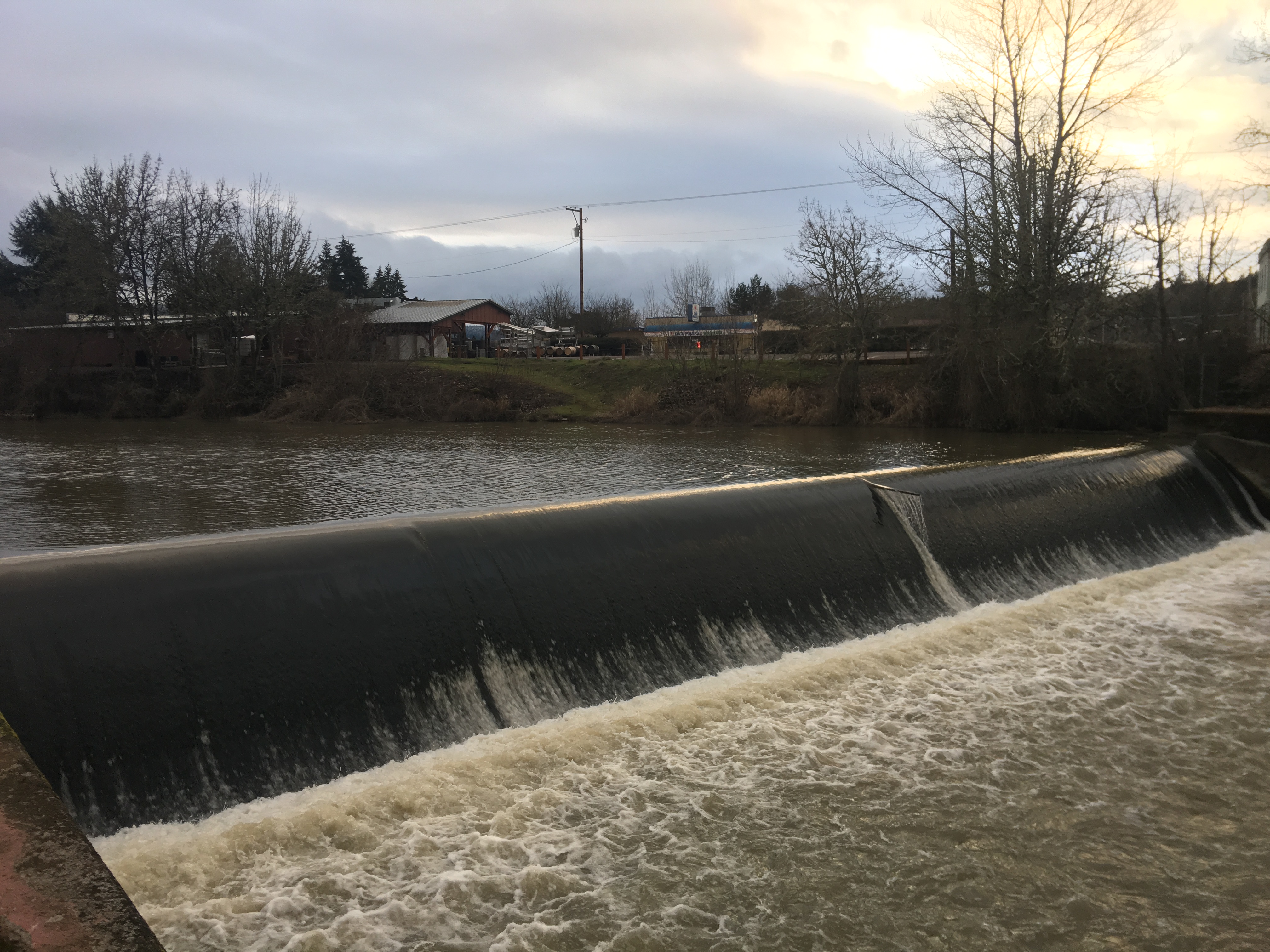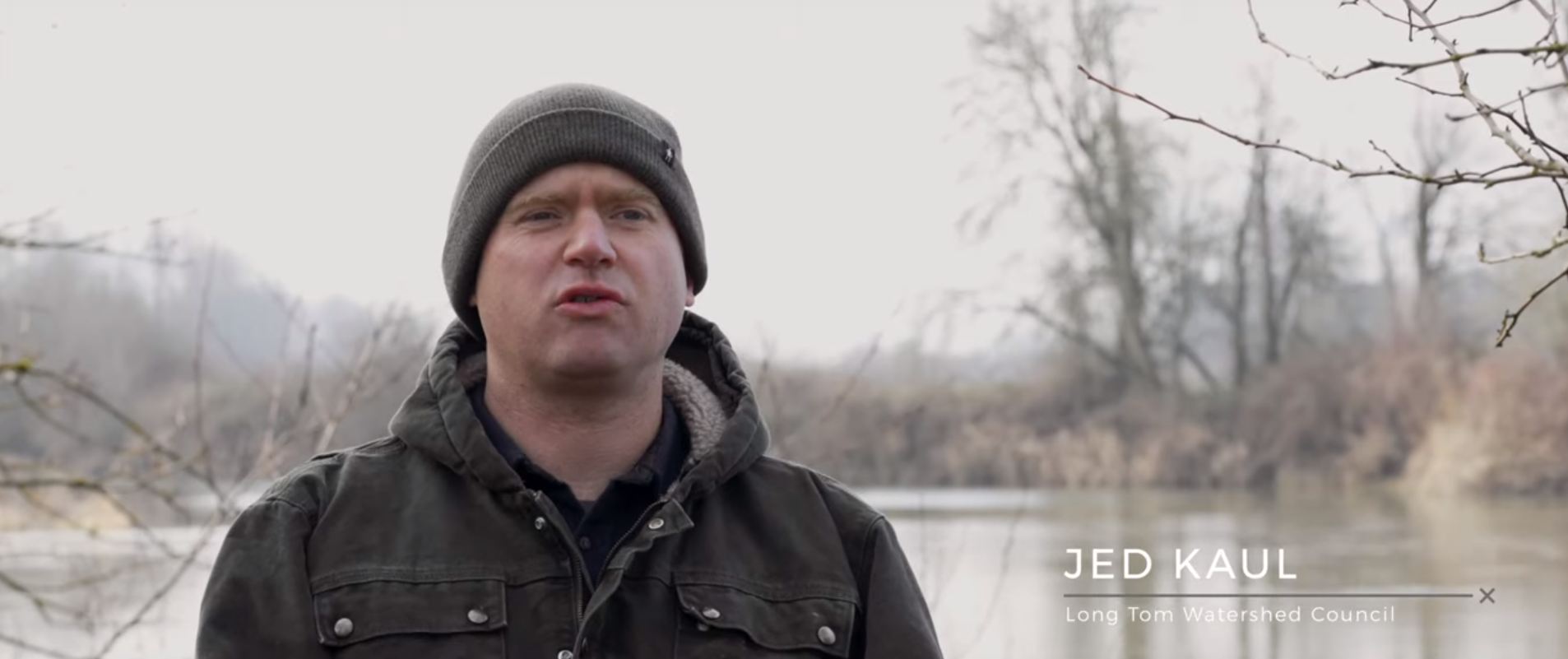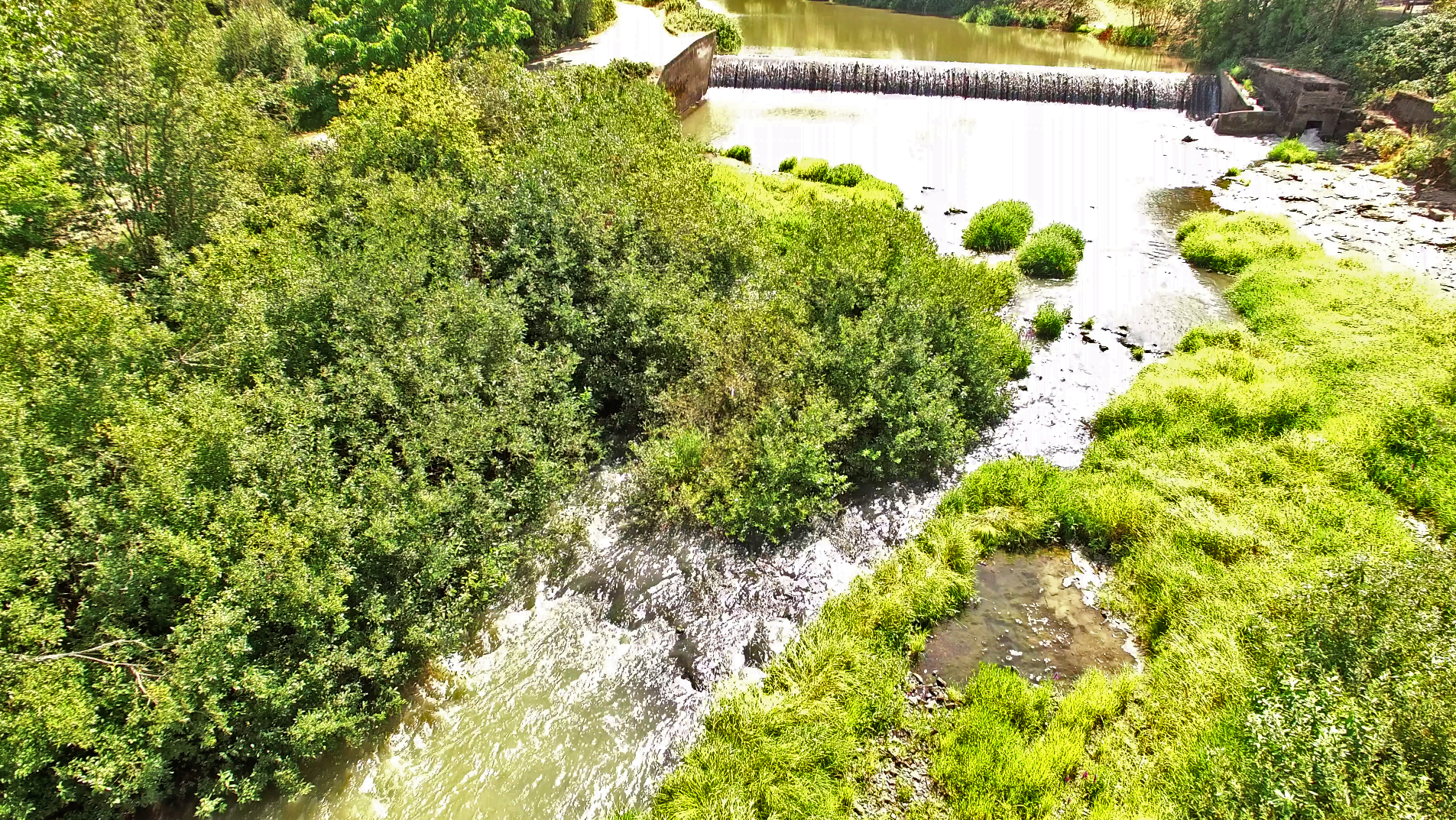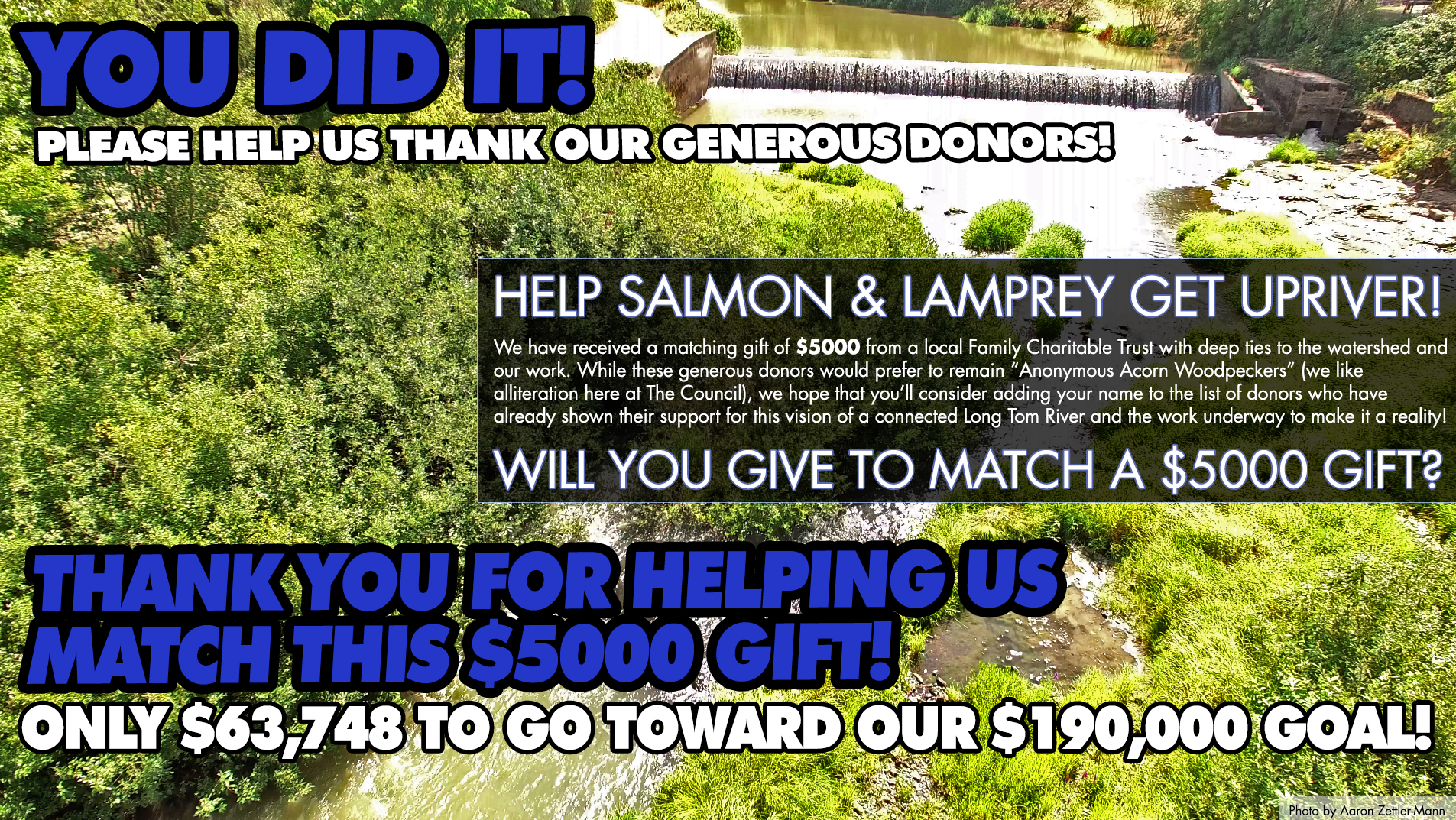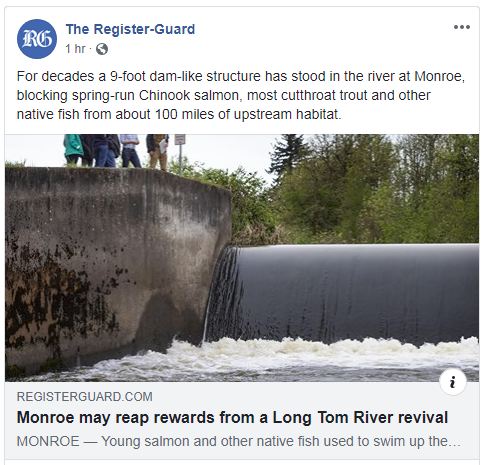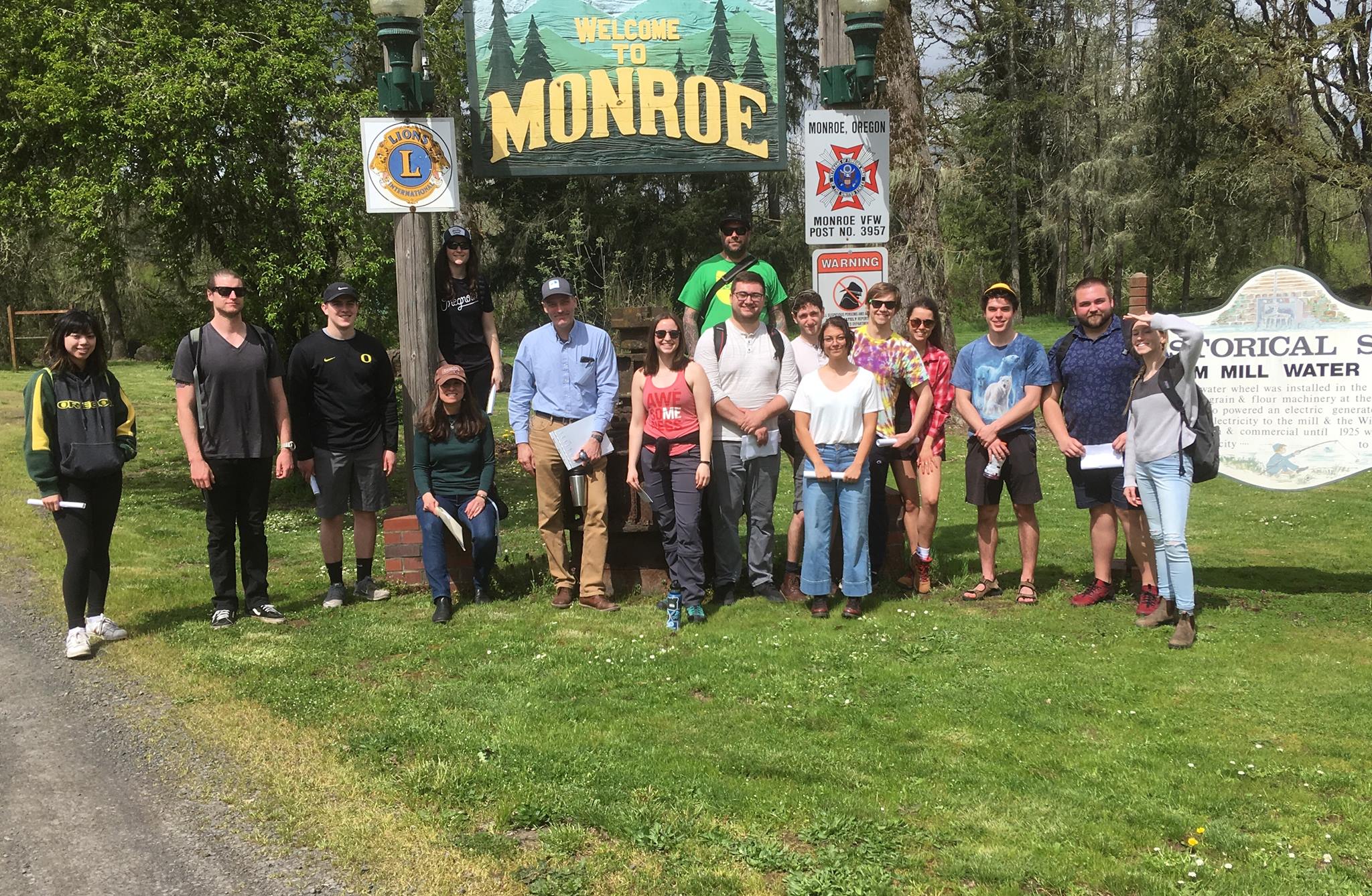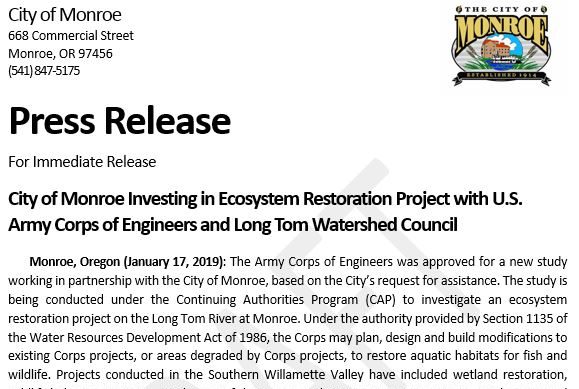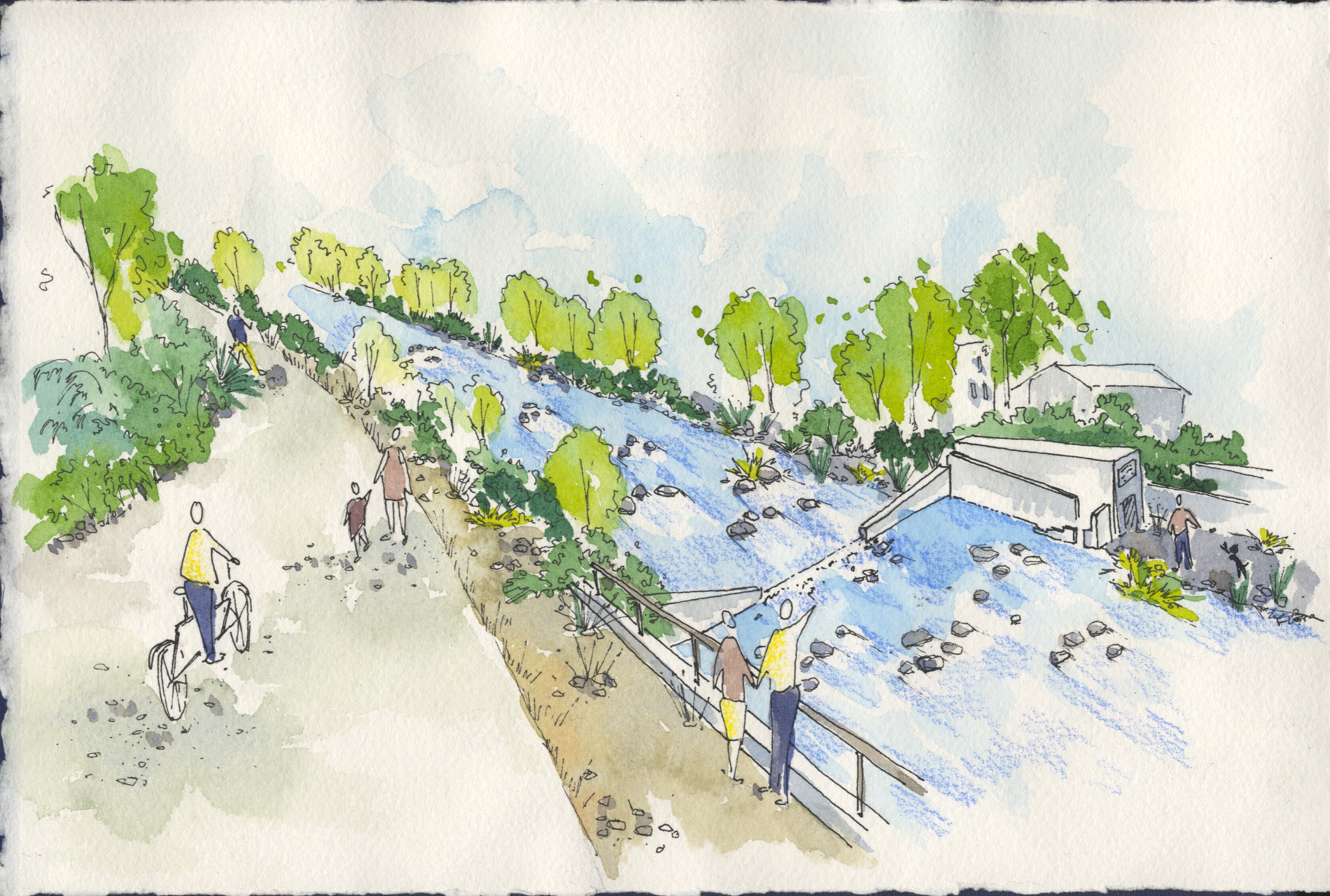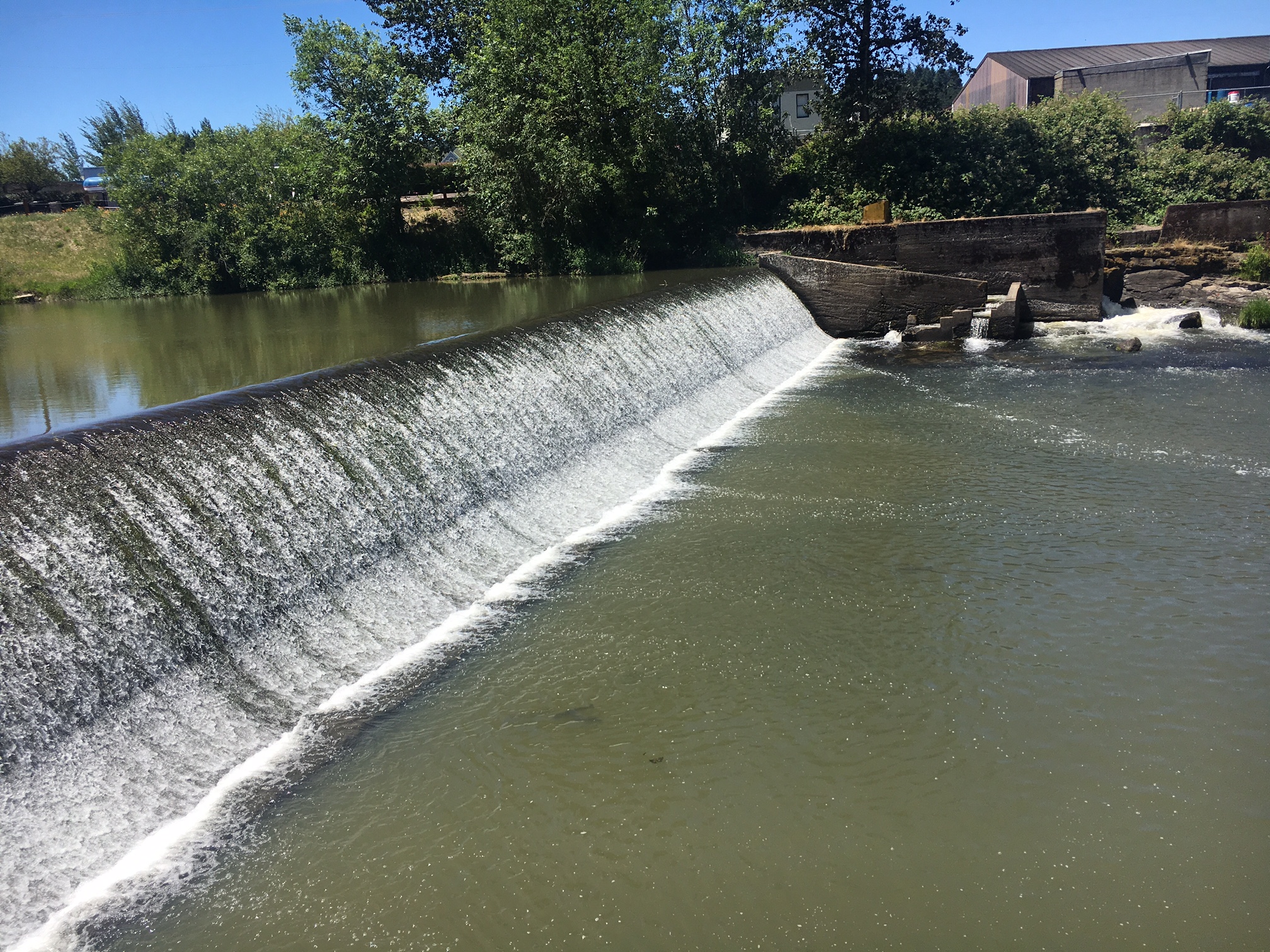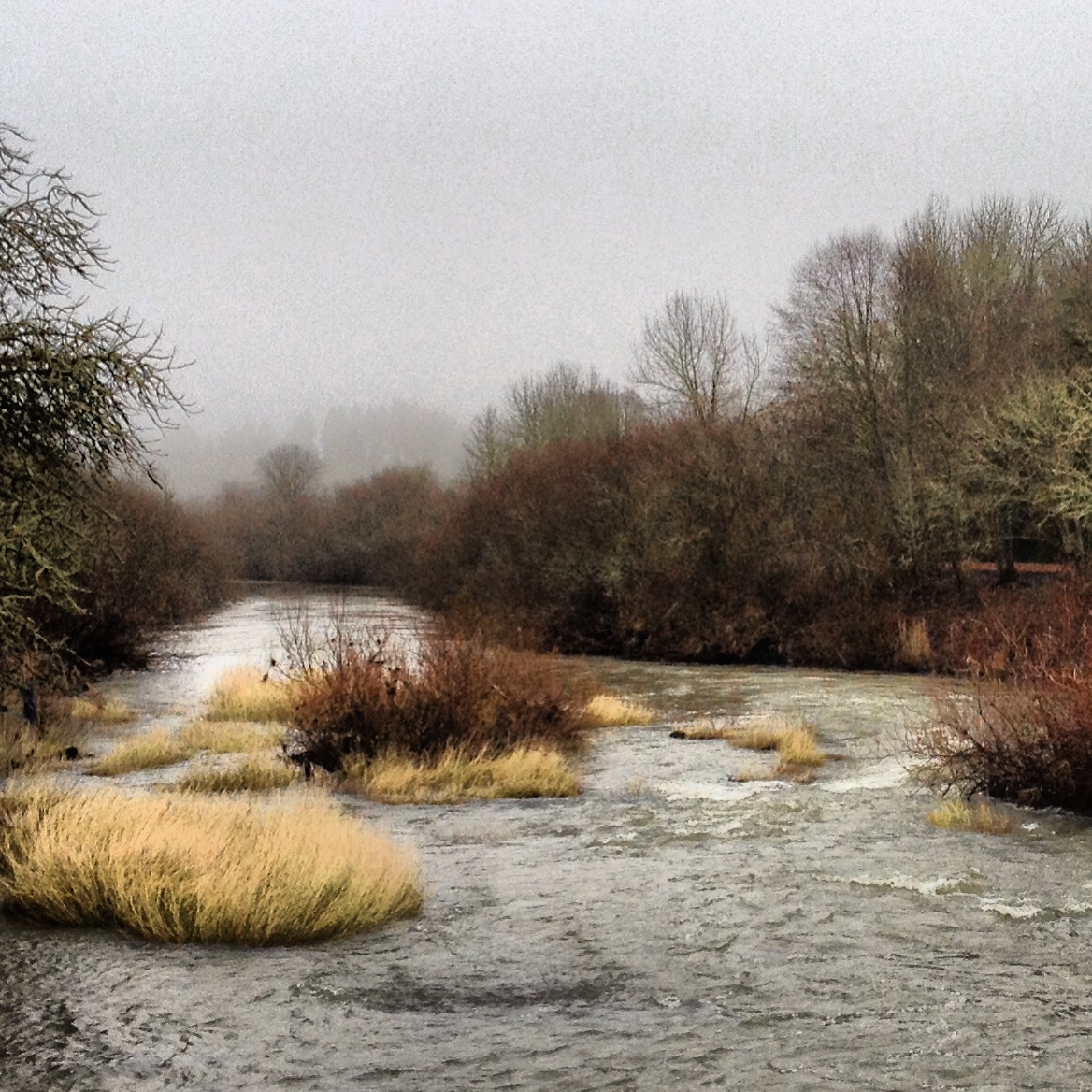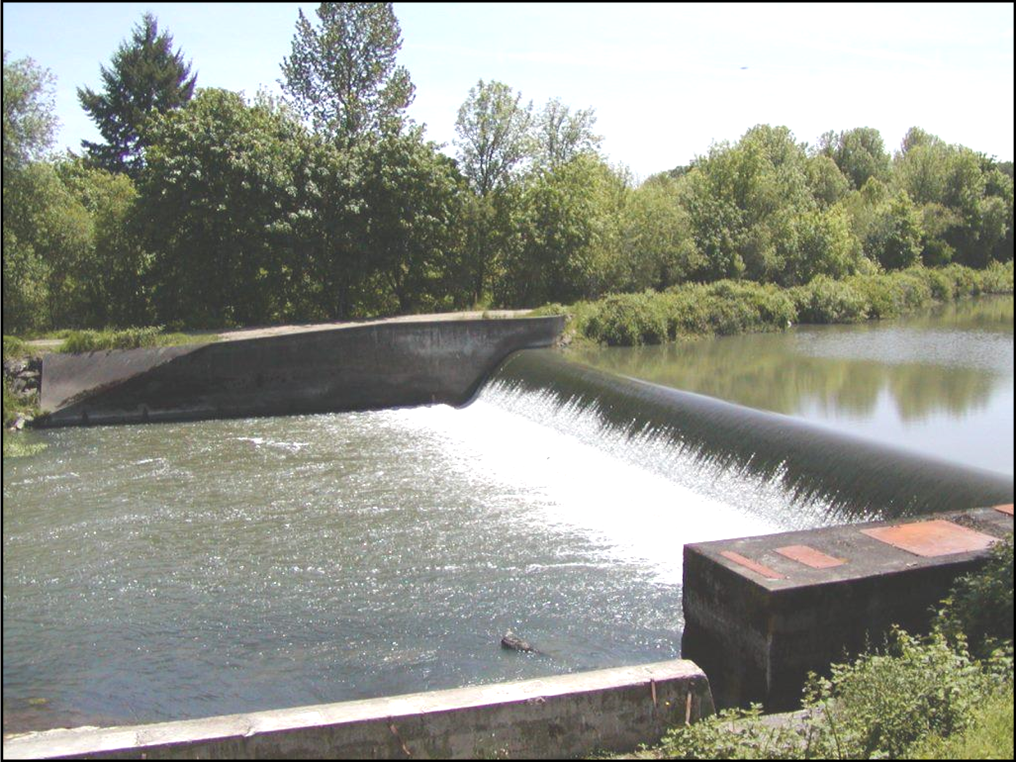Wild Chinook Salmon in the Long Tom?
While most people don’t think of the Long Tom when they think of salmon, the Long Tom River is an essential piece of the endangered wild spring Chinook Salmon’s complex life history in the Willamette system. Wild fish born in the McKenzie or Middle Fork make their way down the Willamette during winter’s high flows in search of rearing habitat like the Long Tom. The warmer, slower, and naturally clay-silted waters make for great places to hide and get a little bigger before heading out to sea. Historically, juvenile fish would have been common in parts of the Long Tom system in the winter. Currently an Army Corps of Engineer’s structure in Monroe prevents these fish from accessing most of their historical Long Tom range. The Watershed Council is currently engaged in a multi-year collaborative effort alongside the Army Corps and the City of Monroe to figure out how to provide passage for these special little visitors to the watershed! You can get more details on the project at our Lower Long Tom Enhancement Plan Page Here, or in the FAQ at the bottom of this page.
How Can I Help?
We have already secured a total of $134,235 in combined grants, and donations from local donors, toward this year’s work on this project! This brings the total cash and in-kind resources invested to this project over the last 4 years to over $300,000 from Dick & Gretchen Evans, the Oregon Watershed Enhancement Board, and The Hewlett Foundation’s Open Rivers – Resource Legacy Fund. Now we need an additional $80,000 this year for the council to stay engaged in this critical next phase! Please give today to this important work!
CLICK HERE TO GIVE TODAY!
What will your gift support?
- Engagement with local, and federal partners to continue designing & vetting the fish passage alternatives
- Supporting critical backbone services for the management of the project
- Helping bridge the gap between our robust outreach & vision phase, through the design phase, to keep momentum towards implementation!
Do you have questions about the project? Check out our project page with background and timelines.
Lower Long Tom Project News & Events
Twenty-One Years of Preparing Over 100 Miles of Habitat Upstream!
60 Riverside Landowners Engaged
12+ Public Meetings, Tours & Stakeholder Engagement Sessions Held So Far!
$300,000+ Grant & Donor Dollars Brought To The Community For This Project!
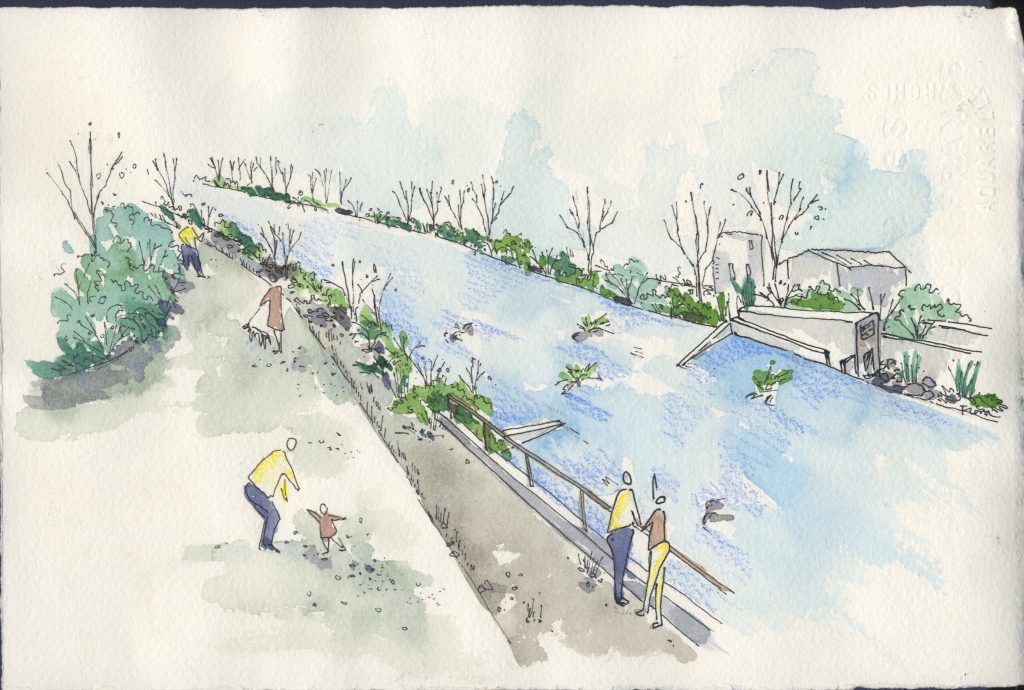 Why Now?
Why Now?
Over the last 21 years, the council, and the watershed community has worked together to enhance this habitat for other native fish through the replacement of barrier culverts, installation of large woody debris to enhance in-stream habitat, and restoration of riparian areas to manage temperatures and improve water quality. Now, the resident coastal cutthroat trout, speckled dace, and redside shiners are ready to welcome their long absent seasonal native neighbors, juvenile Spring Chinook salmon, back to the watershed. In support of the two-decade effort of on the ground work, the council has been working in earnest with local partners including the City of Monroe, riverside landowners, and the Army Corps of Engineers for the last four years to find a fish passage solution at the Monroe dam that benefits these tiny salmon, the growth aspirations of the city of Monroe, and the health of the entire watershed.
Last winter, The project was awarded $100,000 in funding through the Army Corps Portland District as one of two new-start federal projects under the corps 1135 authority. With the City of Monroe as the project sponsor, this marks an important step forward in making this dream become a reality. It means that the Portland District will have the internal funds needed to build upon the foundation the Watershed Council and the City of Monroe crafted together over the last 4 years. The Army Corps will use that awarded funding to evaluate the project, proposed fish passage alternatives, costs, and final project design! In short, it’s the green light for this project to move forward from a vision, to designing its future reality!
But the council needs your help to keep the effort going!
Frequently Asked Questions
Q: What is the function and purpose of the dam in Monroe now? Does it store water?
A: The dam in Monroe is considered a “run of river” dam, which mean there is no water storage function for the dam. As water enters the ponded area behind the dam from upstream, it exits over the dam at the same rate and has no effect on flows downstream. The primary function of the dam is to dissipate energy of the river as it falls over the dam. This dissipation was designed to extend the lifespan and reduce maintenance of the channelized and constructed segments of the river downstream. The Army Corps 1135 process underway will explore the continued utility of the structure in supporting the Corps mission on the Long Tom, and determine what effects, if any, various fish passage alternatives would have upon the constructed channel. A secondary function of the dam is to provide predictable pool depth for the City of Monroe’s drinking water intake. Any proposed alternatives for the dam will include alternatives for securing Monroe’s access to drinking water in the Long Tom. [for more information about the Watershed Council’s work in partnership with the City of Monroe to improve the City’s drinking water: Click here]
Q: Why does the watershed council need my support to address a federally owned structure?
A: This is a watershed wide vision that is bigger than just the dam in Monroe. The Monroe fish passage barrier is the first that migrating fish encounter on their way upstream from the Willamette, and the most complex to find a solution for. The Watershed Council has stewarded this project for the last 4 years, and has leveraged resources for technical review of the project, inundation modeling, community outreach efforts, visioning with Monroe decision makers, and continued dialogue with a steering committee of local stakeholders, and even an opportunity for local school children in Monroe to interact with the native fish below the dam. The Army Corps’ 1135 process requires continued engagement from local partners, including the Watershed Council to help guide the project locally, leverage local resources, and continue to reflect back the priorities of the watershed into the federal process. Once the 1135 process is complete, the Watershed Council and the City of Monroe will continue to be local partners responsible for continuing the stewardship of the project before and after construction. Our ability to stay engaged is essential for a successful project to secure fish passage at Monroe!
Q: Are there salmon in the Long Tom now?
A: The short answer is yes! Each time we have sampled below the dam in the winter we have found juvenile Chinook trying to make their way upstream! So they are here in the watershed, but cannot access the vast majority of habitat they need to hide, grow, and survive before heading to the ocean. The dam in Monroe is the first barrier they encounter moving upstream – over 100 miles of Long Tom main-stem and tributary habitat would be available with the completion of our Lower Long Tom Habitat Enhancement Plan (learn more).
Q: When do you expect successful fish passage to be achieved at this site?
A: That largely depends upon the alternatives selected. For some alternatives, we may see full fish passage as soon as 2021. Others requiring more complex engineering solutions may not see completion until 2022-23 or later.
Q: Will adult salmon come up the Long Tom to spawn?
A: It’s unlikely that the Long Tom was robust spawning habitat for Chinook salmon. The cold & clear waters, and perfect-size gravel beds of other Upper Willamette tributaries like the McKenzie and Middle Fork Willamette are the area’s spawning habitats, but tributaries like the Long Tom are essential rearing habitat for the juvenile fish once they are born. The Willamette system is as complex as the multiple life histories of these special fish, and habitat in tributaries like the Long Tom is important for salmon recovery in partnership with the high quality spawning habitat in the Cascades.
Q: What about the other structures upstream of Monroe? Are they also fish barriers? Are you going to remove Fern Ridge Dam?
A: Upstream of Monroe there are three additional fish passage barriers. Two of those barriers are passable at some high-flow conditions. One has a design solution that can be implemented in future phases of habitat enhancement in the lower Long Tom river mainstem. The other is also included as a priority in our Lower Long Tom River Habitat Enhancement Plan and potential exists to address fish passage at both structures. The dam in Monroe is the first and highest priority to address for passage as its the first barrier that migrating fish encounter when moving upstream from the Willamette. The Fern Ridge dam is a community resource with multiple values for recreation, irrigation flow management, and flood risk mitigation. While Fern Ridge is a fish barrier at all flows, there is over 100 miles of habitat for native fish available on the Long Tom mainstem and Coast Range tributaries between the Monroe dam, and Fern Ridge dam that is currently inaccessible to migrating fish. Our priority is to reconnect those 100 miles of habitat in the Lower Long Tom (below Fern Ridge Dam), and its tributaries to the main stem of the Willamette River and to restore function of this highly managed and modified section of river. Fish passage at Fern Ridge is not a current priority for the council.

